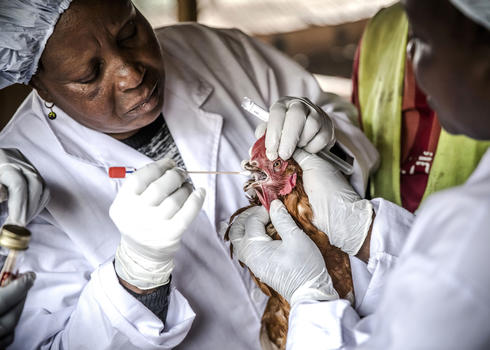
Livestock supports livelihoods, food and nutrition security and provides an important pathway out of poverty for at least 42 per cent of people in the Southern African Development Community (SADC) with over 60 % of the region’s total land area suitable for livestock farming. With approximately 100 million of its human population of around 235 million dependent on livestock, and contributing up to 40 per cent to agricultural GDP this sector presents an opportunity for poor smallholder livestock farmers, particularly women, to rise out of poverty. As a region, the SADC is endowed with rich livestock resources; 74.9 million cattle, 37,1 million sheep, 56.5 million goats, 15.1 million pigs, 1.9 million equine and 419.8 million poultry (FAOSTAT, 2016); as well as vast rangelands and diverse wildlife. An estimated 75% out of the above livestock population is kept under smallholder traditional farming systems. In recent decades, the world food economy has seen a shift towards increased consumption of animal-source foods; and against the backdrop of increasing world population, urbanization and globalization, this provides significant opportunities for African countries. However, apart from a handful of countries in Southern Africa (Namibia, Botswana, Eswatini, and South Africa), which enjoy access to the lucrative export markets for meat, most countries have not been able to unlock the full potential of their livestock resources.
Although Livestock Production offers the SADC region an opportunity for accelerated economic growth, the challenges that constrain access to markets and trade opportunities in the SADC region are many and varied and include i. the presence of trade sensitive transboundary diseases such as foot and mouth disease (FMD), peste des petits ruminants (PPR), highly pathogenic avian influenza (HPAI), among others; ii. weak and under resourced veterinary services and related services; iii. lack of appropriate policy and regulatory frameworks and weak implementation, which undermine compliance with the sanitary requirements under the OIE Terrestrial Animal Health Code (TAHC) standards, for animal health, and Codex Alimentarius standards, for food safety iv. lack of development of livestock value chains and related infrastructure; and v. lack of technical expertise and capacities for effective animal disease control, inspection and certification in accordance with international requirements and guidelines.
The animal health component is one of three components, in addition to plant health and agriculture information management systems that are being implemented under the STOSAR. The project is operationalizing the Regional Agricultural Policy (RAP) and aims to improve the productivity, production and market access for livestock and livestock products, through the control of three high-impact transboundary animal diseases. This is addressed through four key result areas, namely: i. harmonized regional control and management strategies for transboundary animal diseases: FMD, PPR and HPAI as they affect trade in animals and animal products; ii. Coordinated control and management of transboundary animal diseases - FMD, PPR and HPAI at regional level; iii. FMD, PPR and HPAI management capacities strengthened at regional and national levels for effective surveillance, early warning systems, and implementation of control measures; and iv. Innovative approaches to risk management of trade-related diseases are promoted in accordance with international guidelines and standards.

